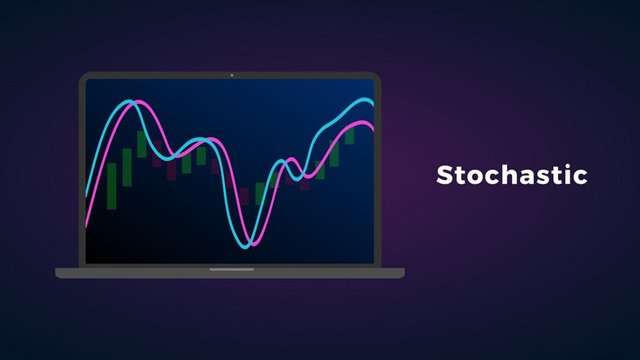Technical ideas on how to use momentum indicator (Stochastic Oscillator)

Hello dear readers, with this post I will continue socializing technical analysis content, specifically in describing everything related to the components and technical functionality of the Stochastic Oscillator, and some technical ideas on how to use the momentum indicator (Stochastic Oscillator).
From a theoretical construct, the Stochastic Oscillator is one of the most used technical analysis tools when trading, and can be defined as a statistical variable of stochastic incidence, that is, it depends on a group of data with maximum and minimum values, and whose movements are determined within a specific period that enters or establishes ranges.
It is important to emphasize that the Stochastic Oscillator is one of the most popular classic indicators when making buy or sell decisions, because, as already mentioned, it allows to analyze the price action in a given period of time, considering the range that the price is developing at its maximum and minimum pointsmo.
Now, an element to highlight is that this type of indicator, when moving in a known range, has the potential to indicate if at a specific moment in the market there is an Over-Buy or Over-Sell condition.
To complement what has been explained in the two previous paragraphs, it is worth mentioning that the Stochastic Oscillator is a momentum oscillator whose values oscillate between 0 and 100, that is, it measures the price action through its impulse and development, when considering the variations that the price experiences during a determined time, this indicates that its technical functionality consists of comparing the current price with a defined price range.
In relation to the structural components of the Stochastic Oscillator, it is worth mentioning that it is constituted by two lines between these: line% K and line% D, which according to the price action fluctuate within the previously mentioned scale, it is worth emphasizing that the position of both lines reflects the impulse, strength, and trend of the price.
Components of the Stochastic Oscillator
Line %K
The first component of the Stochastic Oscillator is the %K line, this element has been defined as the fast stochastic variable, whose data serves as input to later estimate the slow stochastic variable, the statistical formula to know the %K line is the following:
Line %D
The second component of the Stochastic Oscillator is the %D line, this element is known as the slow stochastic variable, in other words, it is the arithmetic mean of the fast stochastic variable (%K Line) and therefore the most important one, because it works as an input signal, and statistically it is obtained by using the following formula:
Overbought and oversold limits
When the stochastic oscillator reaches its maximum point, it is considered as the moment where the price action is in the Overbought limit area, and in the opposite case, i.e. when the stochastic oscillator reaches its minimum point, it is inferred that the price reached an Oversold limit area.
That's all for today, I hope I have covered a good part of this important indicator, in the next post I will describe in detail, the different ways to use the Stochastic Oscillator in trading operations.

SOURCES CONSULTED
Ng Ee Hwa Trading strategies using Stochastic. Link

OBSERVATION:
The cover image was designed by the author: @lupafilotaxia, incorporating image background: Howtotradeblog

